Photo essay: Equality is our goal, access is our right
Date: 01 March 2019

A bus to get to work. A clinic for health care. A monthly pension for old age. Some people can take these for granted. But many others suffer from the lack of infrastructure, public services and social protection that affect their rights and well-being. Women and girls are often foremost among those who miss out.
Progress and real development will only be possible if all people have equal rights and opportunities to thrive. Meeting that goal requires recognizing that women and girls face particular barriers and have different needs. And then taking deliberate steps so that no woman or girl is left behind, regardless of where she lives or how much she earns, or where she comes from.

Infrastructure can provide a way out of poverty and increase the chance of a better future. When there is a lack of infrastructure, communities around the world depend on women to close the gaps with their time-consuming, back-breaking labour.
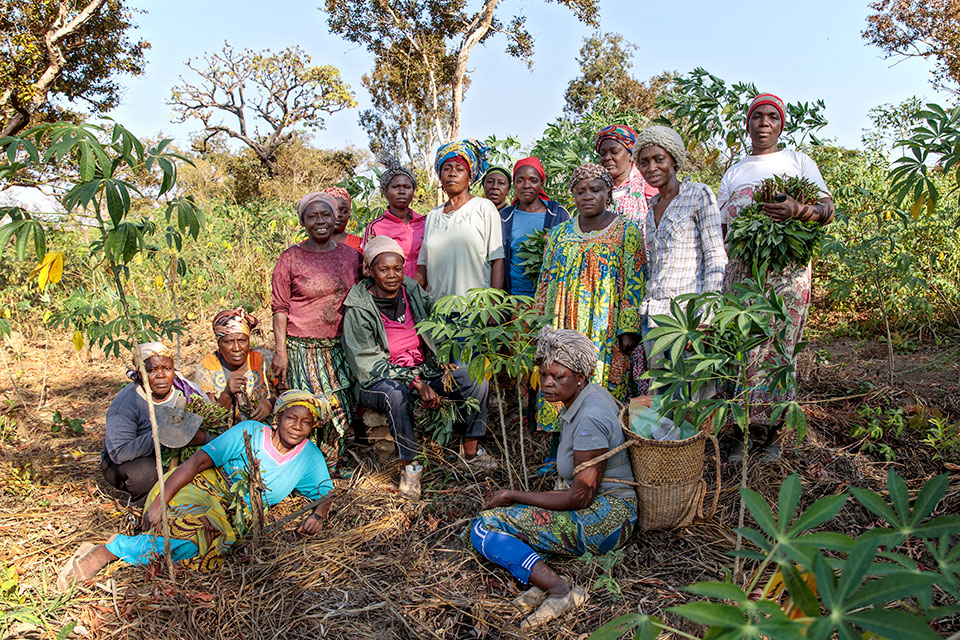
“I leave home by 7 a.m. to come here by bike. I work until 1 p.m. If there’s no bike to take me back, I walk back home. It can take 2 – 3 hours and I am usually very tired by then. Because of the distance, I cannot carry anything if I am walking back,” says Mohn Malambi, a member of SOCCOMAD, a newly formed women’s cooperative in Yoko, central Cameroon.
Women in this community have grown food for generations but didn’t have land right or access to markets to sell the food they grew. Three years ago, the Government of Cameroon started to build a 250 Km (155 mile) road that would connect rural communities like Yoko with the capital. The women farmers of Yoko seized their moment to start a cooperative, knowing that the road project would bring more people to the area and create access to larger markets for their produce.
“The cassava crop cannot be left in the ground too long, because it rots,” says 52-year-old Tukuri Marie Chantal. It’s a simple equation—with land ownership and better roads, it takes less time and costs less to transport produce, and that means more income for women farmers.
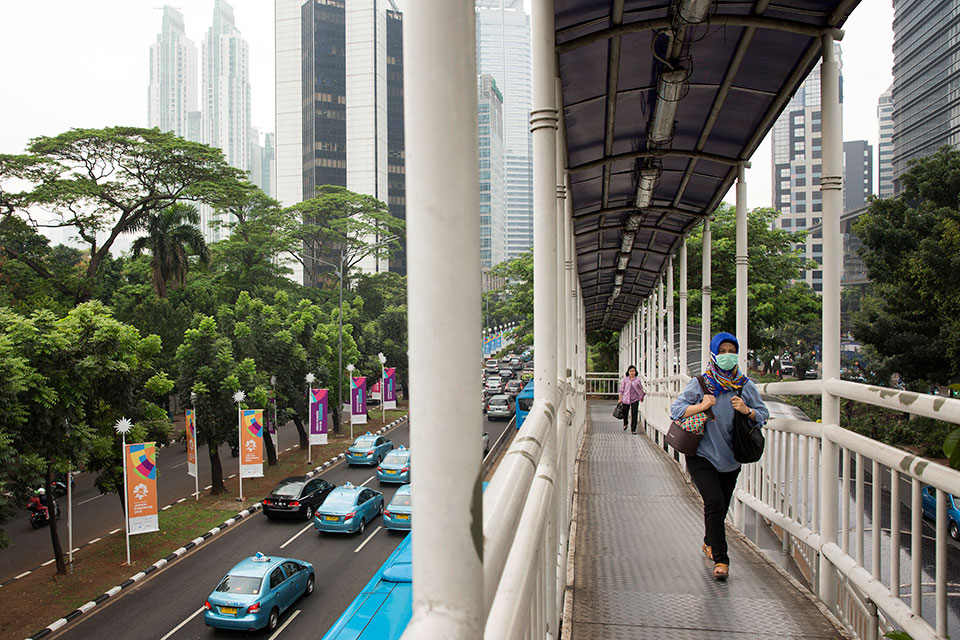
The city of Jakarta, Indonesia, gleams with new buildings and other amenities. Yet safety in public spaces is a concern for women there. Fears about harassment and assault may keep women from using urban transport and other infrastructure even if they have ready access to it. Measures such as bright lighting and visible passageways help alleviate their concerns. With UN Women’s support, the Safe Jakarta project is aimed at pinpointing and closing safety gaps.
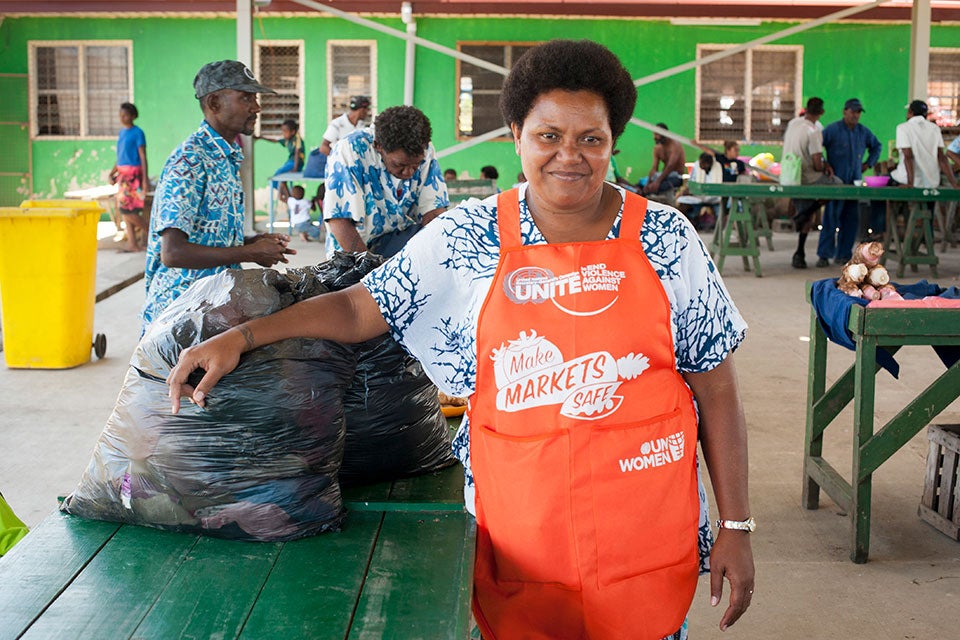
In disaster-prone Fiji, recovery efforts after Tropical Cyclone Winston had to involve women, especially the women vendors of Rakiraki Market. “For most of us women market vendors, we focus only on coming to the market to make money. But what if there is a cyclone or flooding that makes it impossible for us to be in the market?” says Varanisese Maisamoa, President of the Rakiraki Market Vendors Association.
The women vendors’ insights informed the market reconstruction to include Category-5 cyclone resilient infrastructure, a rain water harvesting system, flood resistant drainage, and a gender-responsive design.
“I’m looking forward to a market that is safer, better ventilated, with facilities such as changing areas for babies, improved toilets and a female market attendant. Our vendors also know what to do before, during and after a disaster,” Maisamoa added . Read more ►
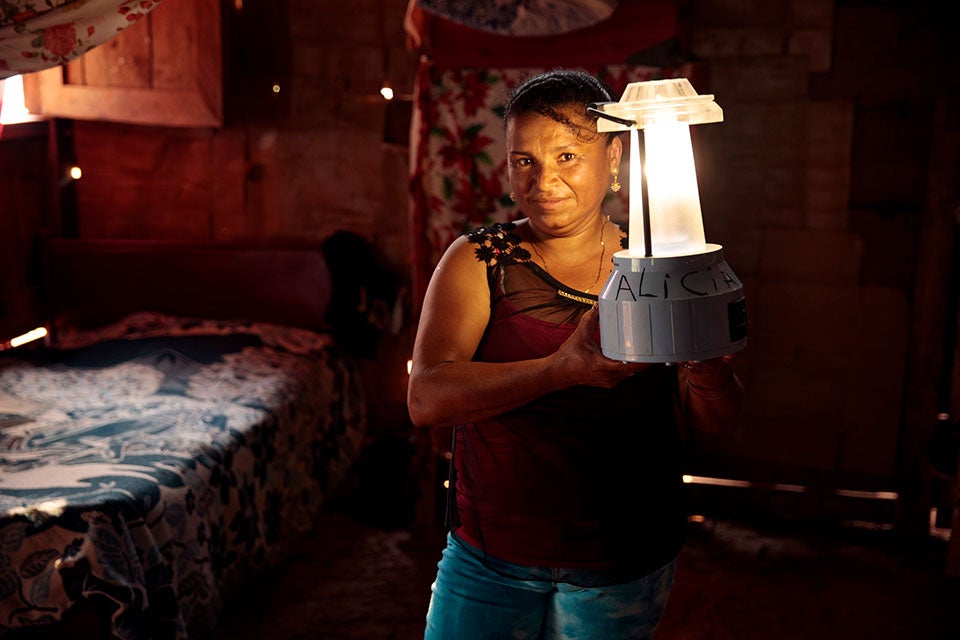
Communities without electrical grids are increasingly turning to solar devices to jumpstart access to modern energy. Martha Benavente learned to make simple, low-cost solar lamps through a programme supported by UN Women and the governments of Norway and Sweden in a small community in Guatemala. Selling the lamps provides a source of income. Using them in her own home has ended the days when she would race to finish chores before dark because it was too costly to burn candles. Read Martha’s full story ►
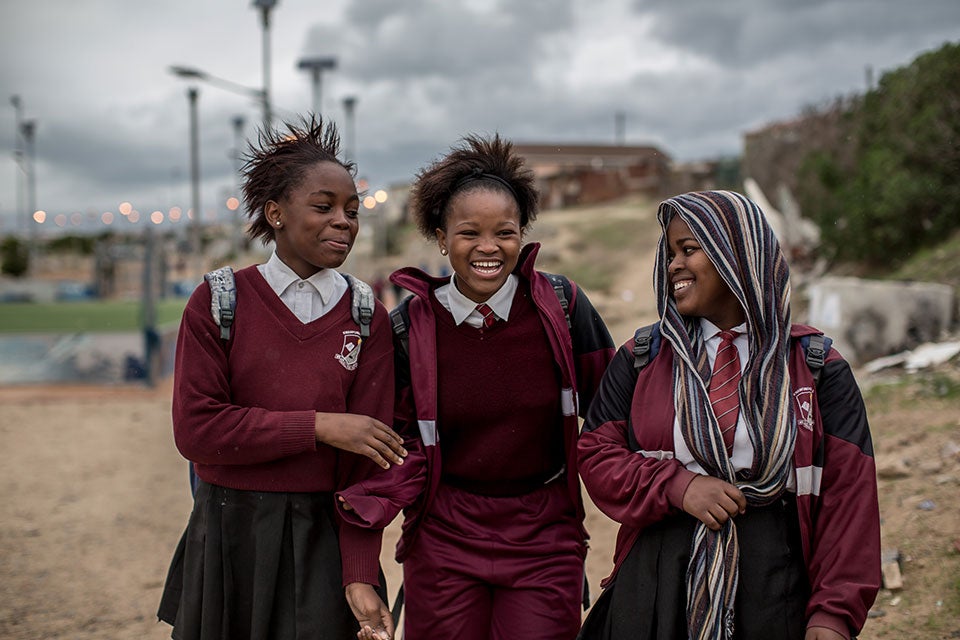
Education is a human right and an essential public service with lifelong consequences. Yet many girls still struggle to get an education. In Khayelitsha, the largest informal township in Cape Town, South Africa, girls at the Yomelela Primary School contend with severe poverty and acute risks of violence. With the backing of the UN Trust Fund to End Violence against Women, sports and peer counselling are among the methods that help them cope, feel safe and stay in school.
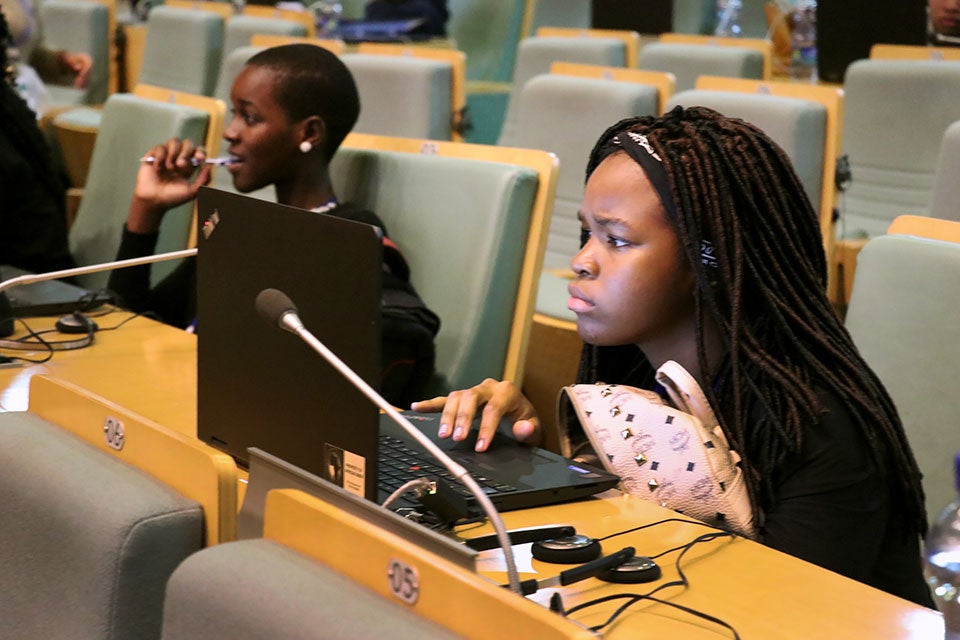
As the fourth industrial revolution unfolds, the future of jobs will be defined by innovation. While more girls are attending school than before, girls are significantly under-represented in STEM subjects in many settings. The first Coding Camp in Addis Ababa, Ethiopia, brought together girls from 34 countries in the African continent to nurture their potential as innovators and technology creators.
What happens when girls get equal access to technology? They build.
“We are trying to build a drone that is controlled by SMS messaging that will be able to dispense medicine in rural areas,” shared 15-year-old participant Eno Ekanem. Read more ►
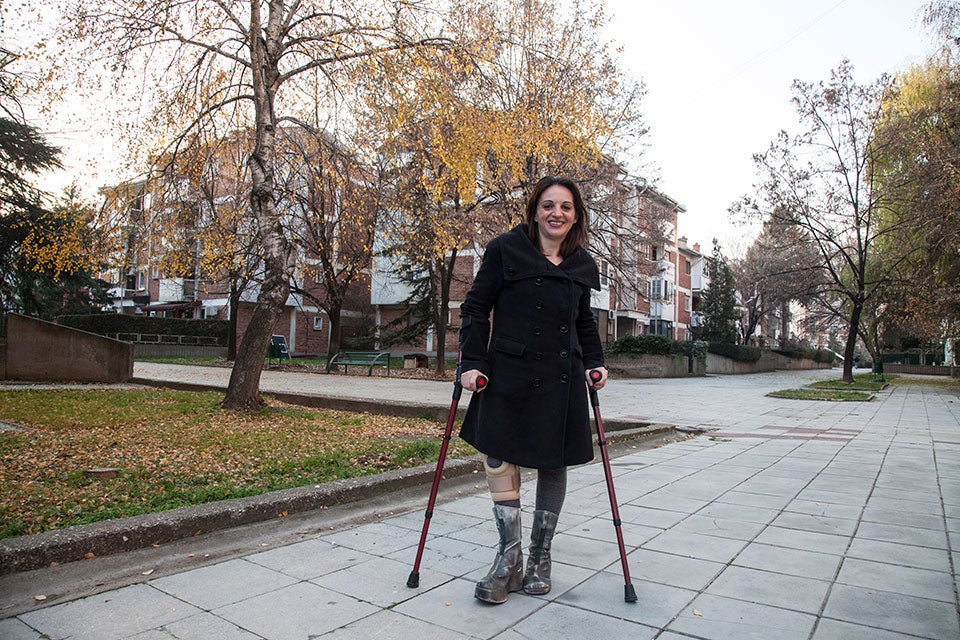
In the Republic of North Macedonia, many girls and boys with disabilities are still segregated in separate schools; a very low percentage reach university. Activist Elena Kochovska is fighting for their greater inclusion in education and employment. Read her full story ►
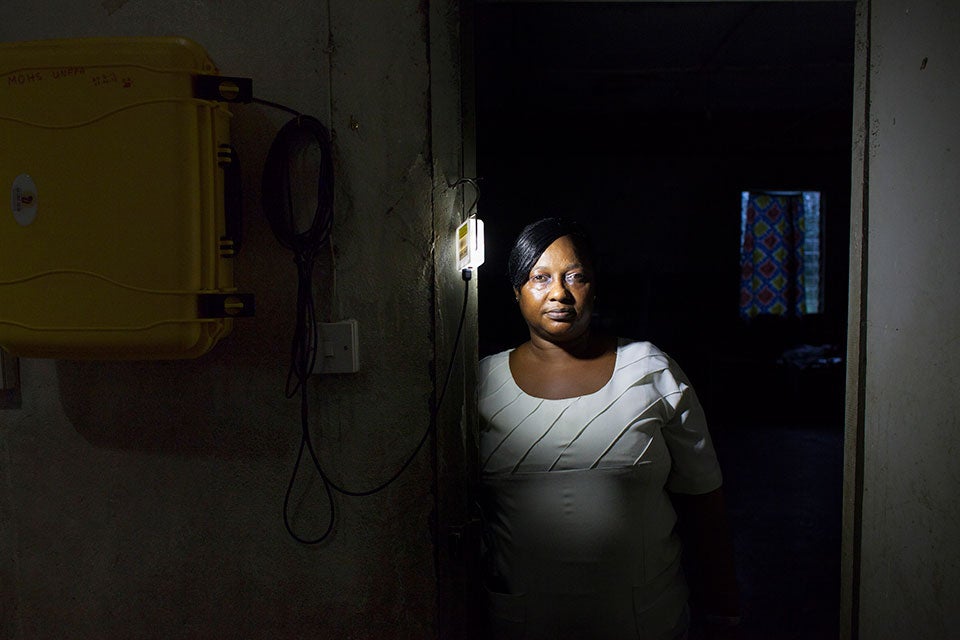
Health-care services should reach all women and provide all the services they need. Yet, too many women still die giving birth, especially in poorer countries where services may be limited and poor in quality. With 1,072 maternal deaths for every 100,000 births, Liberia has one of the highest maternal mortality rates in the world. In the remote areas, infrastructure and facilities in clinics are often lacking; midwives and health-care workers have to deliver babies without any electricity at night.
“It’s really challenging to assist with a delivery using my phone’s light, because I can’t see clearly. I have to hold the phone in my mouth while working. Doing [medical] procedures at night is almost impossible,” explains midwife Lorina Karway.
A UN joint programme installed solar lighting systems in 26 health centres and in five maternal waiting rooms in rural Liberia, including the Bodowhea Clinic, where Karway works, to improve maternal and child health-care services. Read more ►

Low-cost, readily accessible legal aid upholds the rights of poorer women, in particular, to obtain justice as well as essential public services. In Kazakhstan, UN Women has trained legal advocates like Natalia Minayeva. They help women living with HIV solve legal issues and find social assistance, including to end drug dependency. Read more ►

Green, open spaces where everyone can convene, relax and take a break may be taken for granted in some parts of the world. For women and girls in Al-Shoka, a conflict affected neighbourhood in Gaza, Palestine, this was a distant dream, until now. In 2018, the only public garden in Al-Shoka, which was destroyed by the conflict, opened to the public. What’s more, it was re-designed by three female architects and a group of young people from the community to be a truly inclusive space. Read about the female architects who redesigned the garden ►

Limited access to childcare remains a major barrier for women seeking paid jobs, underscoring the importance of providing quality public childcare. Time-use surveys in Uruguay revealed that women spent two-third of their week doing unpaid work, and only one-third on paid work. For men, the reverse applied. The data made Uruguay rethink “care” as an issue that impacts the society and ultimately, led to the adoption of a new law in 2015. Under the Care Act (No. 19,353), all children, persons with disabilities and elderly persons, have the right to get care. The State not only provides care services now, but also guarantees their quality by providing training and regulations.
Soledad Rotella is one of the many mothers benefiting from the new law. Since quality and free day care is available for her 2-year-old daughter, Kiara Rotella can get a full-time job without risking the wellbeing of her daughter. Read the full story ►
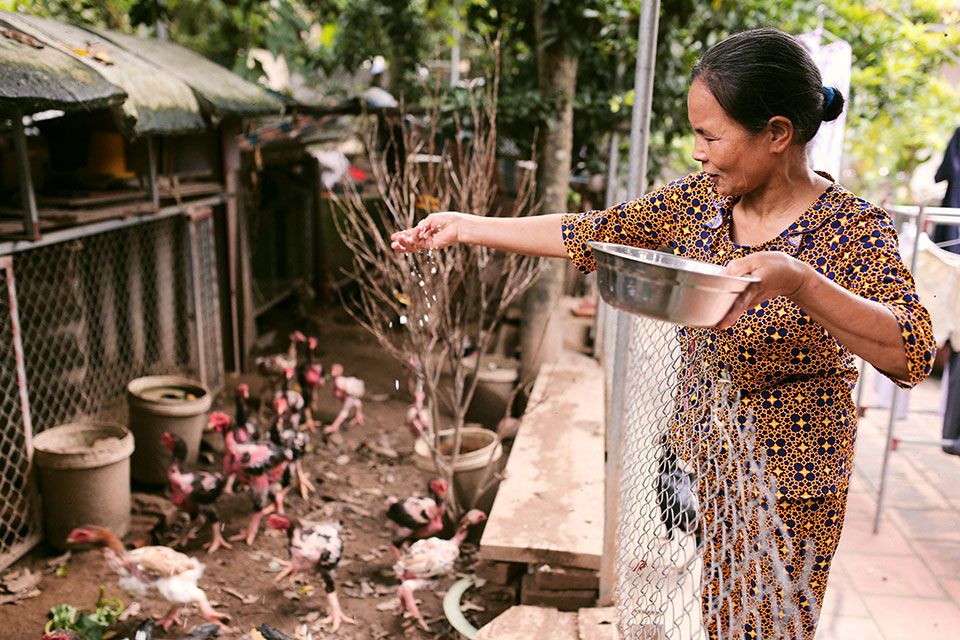
Longer, healthier lives are now the norm in many countries, an indisputable sign of progress. By 2030, over 16 per cent of people will be over age 60, compared to just over 8 percent in 1970. Pension systems are expanding to support people in old age. Yet women are less likely to be covered and generally receive less than men, even as they live longer on average. In Viet Nam, Phung Thi Vinh spent a lifetime as a primary school teacher but only began contributing to social insurance late in her career. A government programme helped her catch up. “My pensions payments are small,” she says. “But they help keep body and soul together.”
This photo essay has been adapted from a UN Women photo exhibition at the UN Headquarters in New York, running from 7 March - 27 March
- ‘One Woman’ – The UN Women song
- UN Under-Secretary-General and UN Women Executive Director Sima Bahous
- Kirsi Madi, Deputy Executive Director for Resource Management, Sustainability and Partnerships
- Nyaradzayi Gumbonzvanda, Deputy Executive Director for Normative Support, UN System Coordination and Programme Results
- Guiding documents
- Report wrongdoing
- Programme implementation
- Career opportunities
- Application and recruitment process
- Meet our people
- Internship programme
- Procurement principles
- Gender-responsive procurement
- Doing business with UN Women
- How to become a UN Women vendor
- Contract templates and general conditions of contract
- Vendor protest procedure
- Facts and Figures
- Global norms and standards
- Women’s movements
- Parliaments and local governance
- Constitutions and legal reform
- Preguntas frecuentes
- Global Norms and Standards
- Macroeconomic policies and social protection
- Sustainable Development and Climate Change
- Rural women
- Employment and migration
- Facts and figures
- Creating safe public spaces
- Spotlight Initiative
- Essential services
- Focusing on prevention
- Research and data
- Other areas of work
- UNiTE campaign
- Conflict prevention and resolution
- Building and sustaining peace
- Young women in peace and security
- Rule of law: Justice and security
- Women, peace, and security in the work of the UN Security Council
- Preventing violent extremism and countering terrorism
- Planning and monitoring
- Humanitarian coordination
- Crisis response and recovery
- Disaster risk reduction
- Inclusive National Planning
- Public Sector Reform
- Tracking Investments
- Strengthening young women's leadership
- Economic empowerment and skills development for young women
- Action on ending violence against young women and girls
- Engaging boys and young men in gender equality
- Sustainable development agenda
- Leadership and Participation
- National Planning
- Violence against Women
- Access to Justice
- Regional and country offices
- Regional and Country Offices
- Liaison offices
- UN Women Global Innovation Coalition for Change
- Commission on the Status of Women
- Economic and Social Council
- General Assembly
- Security Council
- High-Level Political Forum on Sustainable Development
- Human Rights Council
- Climate change and the environment
- Other Intergovernmental Processes
- World Conferences on Women
- Global Coordination
- Regional and country coordination
- Promoting UN accountability
- Gender Mainstreaming
- Coordination resources
- System-wide strategy
- Focal Point for Women and Gender Focal Points
- Entity-specific implementation plans on gender parity
- Laws and policies
- Strategies and tools
- Reports and monitoring
- Training Centre services
- Publications
- Government partners
- National mechanisms
- Civil Society Advisory Groups
- Benefits of partnering with UN Women
- Business and philanthropic partners
- Goodwill Ambassadors
- National Committees
- UN Women Media Compact
- UN Women Alumni Association
- Editorial series
- Media contacts
- Annual report
- Progress of the world’s women
- SDG monitoring report
- World survey on the role of women in development
- Reprint permissions
- Secretariat
- 2023 sessions and other meetings
- 2022 sessions and other meetings
- 2021 sessions and other meetings
- 2020 sessions and other meetings
- 2019 sessions and other meetings
- 2018 sessions and other meetings
- 2017 sessions and other meetings
- 2016 sessions and other meetings
- 2015 sessions and other meetings
- Compendiums of decisions
- Reports of sessions
- Key Documents
- Brief history
- CSW snapshot
- Preparations
- Official Documents
- Official Meetings
- Side Events
- Session Outcomes
- CSW65 (2021)
- CSW64 / Beijing+25 (2020)
- CSW63 (2019)
- CSW62 (2018)
- CSW61 (2017)
- Member States
- Eligibility
- Registration
- Opportunities for NGOs to address the Commission
- Communications procedure
- Grant making
- Accompaniment and growth
- Results and impact
- Knowledge and learning
- Social innovation
- UN Trust Fund to End Violence against Women
- About Generation Equality
- Generation Equality Forum
- Action packs

This story is over 5 years old.
9 photo essays of women and lgbtq people's lives around the world.

Tender Photos of Life on the Frontline of Argentina's Trans Rights Movement
The photographer documenting schoolgirls in northern nigeria, the joys and pains of childbirth around the world, in photos, images exploring what it's like to be part of india's queer community, brilliant photos of black joy at the 2018 afropunk festival, the activists using embroidery to protest mexico's murder epidemic, stunning portraits from a brazilian city’s first lgbtq parade, 14 powerful portraits showing the diversity of asian-american feminism, people show us the outfits that helped them embrace their inner femme, original reporting on everything that matters in your inbox..
By signing up, you agree to the Terms of Use and Privacy Policy & to receive electronic communications from Vice Media Group, which may include marketing promotions, advertisements and sponsored content.

How photography has progressed ideas of gender identity and expression
Featuring work by cindy sherman and juliana huxtable, and guest edited by artist, activist, and producer, zackary drucker, aperture’s new issue celebrates the infinite possibilities of our identities.
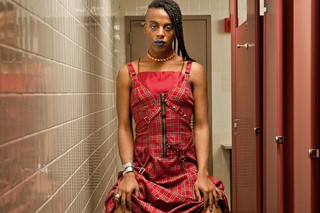
Newton’s third law, “For every action there is an equal and opposite reaction,” goes far beyond the scope of physics. We can see it in all areas of life, perhaps most clearly where oppression exists and takes root.
Last month, American Danica Roem was elected Virginia’s first trans state legislator – unseating Bob Marshall, the man who sponsored the state’s transgender bathroom bill banning trans students from using public facilities that corresponded to their gender identity and required administrators to out trans students to their parents.
Marshall’s efforts to deny fundamental human rights – life, liberty, and privacy – were the ultimate cause of his downfall, helping to bring forth a new era in the fight for trans rights and queer visibility as gender pioneers continue to push beyond the binary of the masculine-feminine divide.
As photography has shown throughout its 180-year history, representation has the power to influence ideas, beliefs, behaviours, and ultimately, laws and society around the world. This winter, Aperture magazine introduces “Future Gender,” a new issue dedicated to the representation of trans and gender-nonconforming lives, communities, and histories.
“Photography saved my life. As an adolescent, I discovered that by taking a Polaroid picture of myself dressed as a girl, I could escape the confines of boyhood. I have continued to use photography as a way to verify my existence and to see myself, my relationships, my evolution” – Zackary Drucker
Guest edited by Zackary Drucker , artist, activist, and the producer of the acclaimed Amazon TV series Transparent , “Future Gender” examines the ways in which photography has played a pivotal role in the expression of social and personal identity. “Future Gender” is as diverse, inclusive, and expansive as the nuances and complexities of gender allow, traversing far beyond the binary into new realms where representation offers possibility, actualisation and agency.
“Photography saved my life,” Drucker reveals. “As an adolescent, I discovered that by taking a Polaroid picture of myself dressed as a girl, I could escape the confines of boyhood. I have continued to use photography as a way to verify my existence and to see myself, my relationships, my evolution.”
Drucker’s intimate understanding of the medium allowed her to use “Future Gender” as a site of exploration and expansion in equal part, spotlighting stories that examine the intersections between image and identity in radical and compelling new ways. The issue features Marlow La Fantastique, the African-American star of the 1970s drag underground; Nick Sethi’s photographs of the Aravan, the 18-day Indian festival that embraces the trans community; Tobias Zielony’s photos of Kiev’s LGBT scene; a series of photographs of Juliana Huxtable taken by Amos Mac inside the ACLU offices, where she worked as a legal assistant with the racial justice program – yet was subject to racist and transphobic attitudes during her employment.
The issue kicks off with an interview between Drucker and trailblazing author Kate Borenstein, who observes, “When gender is a binary, it’s a battlefield. When you get rid of the binary, gender becomes a playground.”
Drucker shares her insights, experiences, and wisdom gleaned from a life that expands our understanding of gender in all its multi-faceted glory.

I would like to begin with the discovery of the language and the way it informs our thoughts and ideas about identity. I love your interview with Kate Bornstein, where you talk about discovering the word “transgender” after shoplifting a copy of her book Gender Outlaw from a store. Could take us back to that moment and what it was like to find this word, and how it impacted you.
Zackary Drucker: As a young person, I was extremely effeminate. I was conscious of the fact that most of the people around me assumed that I would grow up to be gay. This assumption was demonstrated in sometimes subtle, sometimes explicit ways, but I always felt like it was missing the mark.
I grew up in Syracuse, New York. There was little exposure to trans people and trans culture outside of cable television, video rentals, or what books I could find. I had no one to identify with. At 14, in 1997, this did not make me very popular in school. I felt like a pariah. I quickly learned the social rejection of subverting the gender binary. Which was not subtle. It was very direct.
I knew that transsexuals existed, but that felt like a leap to me at that point. Finding Kate’s book was monumental; it was speaking directly to me. I learned that transgender included different kinds of gender expression, and that I could identify as trans without proclaiming myself a woman. I’ve always felt very in-between and circumspect about the gender binary. It only serves less than half of the population, and even there it’s a failure.
How does naming something begin to change the way we think, identify, and relate to ourselves and to others?
Zackary Drucker: It gives us a sense that we’re not alone; that we’re a part of a tribe. Giving something a name helps facilitate a sense of community.
“I’ve always felt very in-between and circumspect about the gender binary. It only serves less than half of the population, and even there it’s a failure” – Zackary Drucker
We have entered a new frontier in public discourse, where the binary thinking around gender is being challenged. Why do you think going beyond the binary is so challenging for so many people, both gay and straight?
Zackary Drucker: The entirety of our social order is structured around the gender binary. Dismantling that is a feat, and we’re just getting started.
My grandmother Flawless Sabrina once said: “Pioneers seldom live long enough to walk in the path that they cut. Somewhere, some day, a kid that you’ll never meet will see what you’re doing and say, ‘If she can do it, I can do it too.’”
Flawless and Auntie Kate set the example for how I can live my life, and I try to set the same example for others.
I’d like to talk about the power of representation. As the old refrain goes, “Seeing is believing” – but more than that, seeing has the added power to normalise or stigmatise. Some people are challenged by trans people, because they feel “deceived” by the accuracy – perhaps they feel not only gender is being challenged but also sexuality. Could you speak about this?
Zackary Drucker: There has always been a tradition of trans bodies being sexualised and objectified. None of the words we use to describe our sexual orientation are adequate to describe an attraction to a trans or gender nonconforming person.
Even the word “bisexual” is predicated on a binary. I love bisexuals, but new words will emerge because language evolves quickly: pansexual, sapiosexual, trans-amorous, robo-sexual, virtual-sexual, cross-gender heterosexuals – you name it!

I would like to address the power of representation and the responsibility that artists and the media share, to create honest, authentic images that open and expand the conversation. With “Future Gender,” you’ve done an incredible job tapping into the many threads of trans and non-gender conforming lives, communities, and histories. How did you decide where to begin, what to focus on, and who to include?
Zackary Drucker: We researched trans and gender expansive people around the world and throughout time. With limited space, we could only include so much from such a rich history. This issue of Aperture magazine is a place to start, but there are so many representations to discover and yet to be created.
I love that you included Juliana Huxtable in this issue. How did you come to connect with her?
Zackary Drucker: I met Juliana through a mutual friend, when she was a young person having just graduated from Bard. I was wowed then, as I am now! She is an incredible archetype and model for the future – an artist and thinker who works across mediums, and a human who transcends the borders of our physical reality.
I also love that you included A Rrose is a Rrose is a Rrose , the landmark 1997 exhibition at the Guggenheim. The 90s really broke open a conversation about gender in a new way. How do you see this conversation continuing in the art world today?
Zackary Drucker: A Rrose is a Rrose is a Rrose was another timely beginning. It’s incredible how relevant the photographic work in that exhibition remains today, how artists continue to experiment with gender throughout art history.
I love the ACT UP poster from that show which features three couples and says “Kissing doesn’t kill: greed and indifference do.” The image was made about 25 years ago but could have been made today.
We are much better off as a community than we were in the 90s. It’s a difficult time now, don’t get me wrong, but we have communication networks, media influence, cultural legitimacy, and trans leadership that we didn’t have back then. The more that we can point to in the past, the more prepared we are to move forward.
Download the app 📱
- Build your network and meet other creatives
- Be the first to hear about exclusive Dazed events and offers
- Share your work with our community

- College of Arts & Sciences
- Graduate Division
- College of Liberal and Professional Studies

Photo Essays in Gender, Sex & Urban Life
In Spring 2021, the students in URBS 277/GSWS 277: Gender, Sex, and Urban Life completed a photo essay assignment. The assignment drew inspiration from the work of photographer LaToya Ruby Frazier, and in particular from her documentation of the Flint Water Crisis , which we discussed in class. Reflecting on her engagement with parents and children affected by the Flint Water Crisis and on the systemic anti-Blackness that undergirds the crisis, Frazier explains of one particular interlocutor, eight-year-old Zion Cobb, “ [N]o matter how much this country under its capitalism, its patriarchy, its hatred of Black women, no matter what, she overcame that. And she will continue to move forward. And now she'll have a human document archive of how she survived this moment in her life.”
In conversation with what Frazier refers to as a “human document archive,” the photo essay assignment asked students to photograph the same location every day for one week. Students also wrote captions for their photos as well as a short essay that reflected on what they chose to document, what the process of documentation was like, and what their set of photographs revealed about the structures of power that mediate their chosen location.
Here are two examples of student approaches to the project. Sophomore Megan Chui chose to document Harrison College House , where she would have lived in the 2020-2021 academic year were it not for the COVID-19 pandemic and related shutdowns. Photographing Harrison at night, Chui reflects on a sense of community from which she feels removed, even as she shares with the students in Harrison the experience of being a Penn student. Senior Margaret Tebbe chose to document Lea Elementary , as she volunteered with Lea students throughout her time at Penn. Tebbe uses her photographs to consider the competing presences of haunting and desire. Her photographs and reflection demonstrate the co-presence of loss and vibrancy on the grounds of the school. The goal of the assignment was to provide students with an opportunity to apply the reading and thinking they undertook in the course to the built environment that constitutes their daily life, and to have a place-based experience, even in the midst of the pandemic.

Exploring Gender Roles: Assignments and Rubrics
- Objectives and Goals
- Course Outline
- Assignments and Rubrics
- Poems, Videos, Photos
Childhood Essay
Using a photograph from your childhood as inspiration, you will write a 3-5 page essay reflecting on an event or memory you have in which gender roles played a part in shaping who you are now.
Writing is an iterative project, so this essay will be written in several steps.
1. Free writing- this is when your ideas will take shape! You will have 30 minutes in class to write the rough draft of your essay.
2. Peer review- your group members will look over your rough draft and give you suggestions for edits, restructuring, or development you may want to consider. Note: your final assessment will consider how you participated in the editing process as a peer editor, so take this step seriously!
3. Re writing- you will consider the edits suggested by your peers and rewrite your essay to a clean and polished final draft. Please pay attention to structure, grammar, and content.
4. Sharing- your work is important and you will have the opportunity to share your final essay with the class!
Please refer to the rubric for specifics about your final assessment for this project.
Childhood Essay Rubric

Group Project
As a group, you will create some type of portfolio showing what you have learned about gender during this unit.
This can include
- a photo essay of your peers (including a craft essay)
- a book of poetry about gender by students in your group (including a craft essay)
- an anthology of poetry about gender by poets with critical analysis about the themes within these poems
- start a Beyond the Binary campaign to educate your classmates and other teachers about how gender might be bigger than the binary (include a plan of action and a rationale which quotes scholarly evidence).
- an analytical essay about a film's representations of gender.
- a project which you design that is approved by the instructor.
The goal is to engage in an analytical process that furthers your exploration of gender roles as they pertain to literature, art, or film. You have flexibility in the final product, but you will be graded on...
- how you present gender theory;
- how you substantiate your claims with evidence from other scholarly work;
- how you present your final project;
-and how effectively you display an understanding of gender within a larger framework (i.e. literature, art, film, society, the school, your own life).
Please refer to the provided rubric for specific criteria related to this project.
Group Project Rubric

Rubrics and Assignments
- Childhood Essay Rubrics- PDF
- Peer Review- JPG
- Teacher Review- JPG
- Group Project Rubric- PDF
- Group Project- JPG
Special Collections and Archives
Oral Histories at GSU
Archives for Research on Women and Gender
Donna Novak Coles Georgia Women's Movement Archives
Lucy Hargrett Draper Collections on Women's Rights, Advocacy, and the Law
Phone: (404) 413-2880 Fax: (404) 413-2881 E-Mail: [email protected]
Mailing Address : Special Collections & Archives Georgia State University Library 100 Decatur Street, SE Atlanta, Georgia 30303-3202
In Person : Library South, 8th floor
Employee Directory
- << Previous: Course Outline
- Next: Poems, Videos, Photos >>
- Last Updated: Jul 31, 2023 10:43 AM
- URL: https://research.library.gsu.edu/genderroles

Stereotypes and Gender Roles
Many of our gender stereotypes are strong because we emphasize gender so much in culture (Bigler & Liben, 2007). For example, children learn at a young age that there are distinct expectations for boys and girls. Gender roles refer to the role or behaviors learned by a person as appropriate to their gender and are determined by the dominant cultural norms. Cross-cultural studies reveal that children are aware of gender roles by age two or three and can label others’ gender and sort objects into gender categories. At four or five, most children are firmly entrenched in culturally appropriate gender roles (Kane, 1996). When children do not conform to the appropriate gender role for their culture, they may face negative sanctions such as being criticized, bullied, marginalized or rejected by their peers. A girl who wishes to take karate class instead of dance lessons may be called a “tomboy” and face difficulty gaining acceptance from both male and female peer groups (Ready, 2001). Boys, especially, are subject to intense ridicule for gender nonconformity (Coltrane and Adams, 2008; Kimmel, 2000)
By the time we are adults, our gender roles are a stable part of our personalities, and we usually hold many gender stereotypes. Men tend to outnumber women in professions such as law enforcement, the military, and politics. Women tend to outnumber men in care-related occupations such as child care, health care, and social work. These occupational roles are examples of typical Western male and female behavior, derived from our culture’s traditions. Adherence to these occupational gender roles demonstrates fulfillment of social expectations but may not necessarily reflect personal preference (Diamond, 2002).

Gender stereotypes are not unique to American culture. Williams and Best (1982) conducted several cross-cultural explorations of gender stereotypes using data collected from 30 cultures. There was a high degree of agreement on stereotypes across all cultures which led the researchers to conclude that gender stereotypes may be universal. Additional research found that males tend to be associated with stronger and more active characteristics than females (Best, 2001); however recent research argues that culture shapes how some gender stereotypes are perceived. Researchers found that across cultures, individualistic traits were viewed as more masculine; however, collectivist cultures rated masculine traits as collectivist and not individualist (Cuddy et al., 2015). These findings provide support that gender stereotypes may be moderated by cultural values.
There are two major psychological theories that partially explain how children form their own gender roles after they learn to differentiate based on gender. Gender schema theory argues that children are active learners who essentially socialize themselves and actively organize others’ behavior, activities, and attributes into gender categories, which are known as schemas . These schemas then affect what children notice and remember later. People of all ages are more likely to remember schema-consistent behaviors and attributes than schema-inconsistent behaviors and attributes. So, people are more likely to remember men, and forget women, who are firefighters. They also misremember schema-inconsistent information. If research participants are shown pictures of someone standing at the stove, they are more likely to remember the person to be cooking if depicted as a woman, and the person to be repairing the stove if depicted as a man. By only remembering schema-consistent information, gender schemas strengthen more and more over time.
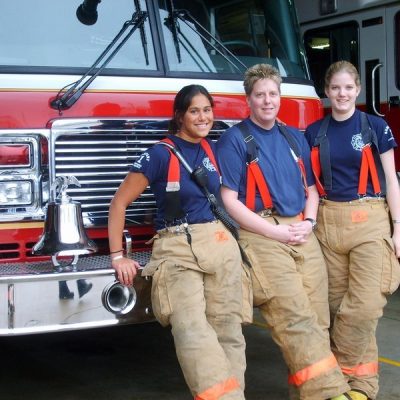
A second theory that attempts to explain the formation of gender roles in children is social learning theory which argues that gender roles are learned through reinforcement, punishment, and modeling. Children are rewarded and reinforced for behaving in concordance with gender roles and punished for breaking gender roles. In addition, social learning theory argues that children learn many of their gender roles by modeling the behavior of adults and older children and, in doing so, develop ideas about what behaviors are appropriate for each gender. Social learning theory has less support than gender schema theory but research shows that parents do reinforce gender-appropriate play and often reinforce cultural gender norms.
Gender Roles and Culture
Hofstede’s (2001) research revealed that on the Masculinity and Femininity dimension (MAS), cultures with high masculinity reported distinct gender roles, moralistic views of sexuality and encouraged passive roles for women. Additionally, these cultures discourage premarital sex for women but have no such restrictions for men. The cultures with the highest masculinity scores were: Japan, Italy, Austria and Venezuela. Cultures low in masculinity (high femininity) had gender roles that were more likely to overlap and encouraged more active roles for women. Sex before marriage was seen as acceptable for both women and men in these cultures. Four countries scoring lowest in masculinity were Norway, Denmark, Netherlands and Sweden. The United States is slightly more masculine than feminine on this dimension; however, these aspects of high masculinity are balanced by a need for individuality.
Culture and Psychology Copyright © 2020 by L D Worthy; T Lavigne; and F Romero is licensed under a Creative Commons Attribution-NonCommercial-ShareAlike 4.0 International License , except where otherwise noted.
Share This Book

Essay on Gender Roles in Society
Students are often asked to write an essay on Gender Roles in Society in their schools and colleges. And if you’re also looking for the same, we have created 100-word, 250-word, and 500-word essays on the topic.
Let’s take a look…
100 Words Essay on Gender Roles in Society
Understanding gender roles.
Gender roles refer to societal expectations of behaviors, attitudes, and activities traditionally associated with males and females. They are shaped by cultural, historical, and social contexts.
Gender Roles in Different Cultures
Cultures worldwide have diverse gender roles. In some, men are seen as breadwinners while women manage home. In others, roles are more balanced, promoting equality.
Changing Gender Roles
Modern society is witnessing a shift in gender roles. Women are increasingly participating in professional fields, while men share domestic responsibilities.
Understanding gender roles is crucial for creating an equal society. It’s important to respect individual choices and promote flexibility in roles.
250 Words Essay on Gender Roles in Society
Introduction.
Gender roles, the societal expectations and norms associated with one’s sex, have been integral in shaping human behavior and interactions. These roles have been subject to significant changes over time, reflecting the evolving understanding of gender and its impact on society.
The Traditional View
Historically, gender roles were distinctly defined. Men were primarily seen as breadwinners, expected to provide for their families, while women were relegated to the domestic sphere, tasked with child-rearing and household chores. These roles were deeply ingrained, limiting individual potential and perpetuating gender inequality.
Modern Perspectives
In contemporary society, the perception of gender roles has undergone a paradigm shift. The feminist movement, LGBTQ+ rights activism, and increased awareness about gender diversity have challenged traditional norms. Men are now more involved in child-rearing and household tasks, and women have made significant strides in professional fields. Yet, gender-based stereotypes and biases persist, influencing career choices, income levels, and social interactions.
Impact of Evolving Gender Roles
The evolution of gender roles has profound implications for society. It fosters diversity, promotes equality, and allows individuals to explore their potentials beyond traditional confines. However, it also presents challenges, such as resistance to change and the struggle for identity.
Gender roles in society are not static but evolve with cultural, economic, and technological shifts. The challenge lies in fostering a society that acknowledges and respects this diversity, ensuring equal opportunities for all, irrespective of gender.
500 Words Essay on Gender Roles in Society
Gender roles are socially constructed and culturally specific norms that dictate the behavioral expectations of men and women in a society. These roles, deeply entrenched within the social fabric, profoundly influence individuals’ attitudes, behaviors, and identities.
The Evolution of Gender Roles
Historically, societies have been predominantly patriarchal, with gender roles strictly delineated. Men were typically associated with the public sphere – working, providing for the family, and making decisions, while women were confined to the private sphere – caring for children, managing the household, and nurturing relationships. However, the feminist movements of the 20th century challenged these stereotypes, advocating for gender equality and women’s rights.
In contemporary society, we are witnessing a shift in gender roles, with an increasing number of women entering the workforce and men partaking in household chores and child-rearing. Despite these changes, traditional gender roles persist, subtly influencing our perceptions and expectations.
Impact of Gender Roles on Society
Gender roles exert a significant influence on societal structures and individual lives. They contribute to gender inequality, limiting the opportunities and potential of individuals based on their gender. For instance, traditional roles often stereotype women as emotional and men as rational, influencing career choices and opportunities, and perpetuating wage gaps.
Moreover, these roles perpetuate harmful stereotypes, impacting mental health. The stereotype of men as strong and unemotional can lead to toxic masculinity, suppressing men’s emotional expression and promoting aggression. Similarly, the ideal of women as caregivers can limit their personal and professional growth.
Challenging Gender Roles
Challenging and reshaping gender roles is crucial for societal progress. Encouraging a culture that values individual capabilities over gender stereotypes can foster equality. Education plays a vital role in this process, promoting critical thinking about gender norms and fostering an understanding of gender as a social construct.
Additionally, media can play a significant role in challenging gender roles. By representing diverse gender identities and roles, media can help break stereotypes and promote a more inclusive understanding of gender.
In conclusion, gender roles, deeply embedded in our society, significantly shape our lives and experiences. While we have made strides towards equality, traditional gender roles continue to persist. Therefore, it is crucial to continually challenge these norms, fostering a society that values individuals for their capabilities and potential, rather than their gender. Through education and media, we can facilitate this shift, promoting a more inclusive, equal, and diverse society.
That’s it! I hope the essay helped you.
If you’re looking for more, here are essays on other interesting topics:
- Essay on Family in Modern Society
- Essay on Social Service
- Essay on Social Networking Sites
Apart from these, you can look at all the essays by clicking here .
Happy studying!
Leave a Reply Cancel reply
Your email address will not be published. Required fields are marked *
Save my name, email, and website in this browser for the next time I comment.
Home — Essay Samples — Sociology — Gender Roles — Gender Roles In Society
Gender Roles in Society
- Categories: Gender Roles Society
About this sample

Words: 534 |
Published: Mar 13, 2024
Words: 534 | Page: 1 | 3 min read

Cite this Essay
Let us write you an essay from scratch
- 450+ experts on 30 subjects ready to help
- Custom essay delivered in as few as 3 hours
Get high-quality help

Dr Jacklynne
Verified writer
- Expert in: Sociology

+ 120 experts online
By clicking “Check Writers’ Offers”, you agree to our terms of service and privacy policy . We’ll occasionally send you promo and account related email
No need to pay just yet!

Related Essays
5 pages / 2058 words
2 pages / 744 words
4 pages / 1642 words
1.5 pages / 772 words
Remember! This is just a sample.
You can get your custom paper by one of our expert writers.
121 writers online
Still can’t find what you need?
Browse our vast selection of original essay samples, each expertly formatted and styled
Related Essays on Gender Roles
Gender stereotypes have long influenced career choices, particularly in Science, Technology, Engineering, and Mathematics (STEM) fields. This qualitative essay undertakes an in-depth analysis of the impact of gender stereotypes [...]
Gender and identity are complex constructs deeply embedded in society. They are not inherent traits but rather social constructs, shaped by cultural, historical, and societal influences. Understanding the social construction of [...]
Gender norms and roles have been a part of society for centuries, shaping the way that individuals perceive themselves and interact with others. Despite notable progress in challenging traditional gender norms, society continues [...]
James Joyce is a prominent Irish writer whose works are celebrated for their modernist techniques and exploration of the human condition. His short story, "Eveline," is a prime example of his writing style and themes. It [...]
Women have faced various forms of institutionalized discrimination throughout history and across different cultures. This undeniable truth has been the driving force behind the feminist movement, which has had both positive and [...]
The roles of women and families of an Egyptian and Mesopotamian culture share some similarities and differences. Women in both cultures take good care of their family as the center piece of a family; a mother and wife. In [...]
Related Topics
By clicking “Send”, you agree to our Terms of service and Privacy statement . We will occasionally send you account related emails.
Where do you want us to send this sample?
By clicking “Continue”, you agree to our terms of service and privacy policy.
Be careful. This essay is not unique
This essay was donated by a student and is likely to have been used and submitted before
Download this Sample
Free samples may contain mistakes and not unique parts
Sorry, we could not paraphrase this essay. Our professional writers can rewrite it and get you a unique paper.
Please check your inbox.
We can write you a custom essay that will follow your exact instructions and meet the deadlines. Let's fix your grades together!
Get Your Personalized Essay in 3 Hours or Less!
We use cookies to personalyze your web-site experience. By continuing we’ll assume you board with our cookie policy .
- Instructions Followed To The Letter
- Deadlines Met At Every Stage
- Unique And Plagiarism Free
50 Gender Roles Examples

Gender roles might feel outdated in the 21st Century, but they continue to be subtly reinforced through culture, media, and gender socialization to this day.
Traditional ideas about gender identity, fitting neatly into a male-female and masculine-feminine binary, have shaped society for many centuries.
From ideas that only men could be rulers of Kingdoms to historical notions of women’s roles in the home , today’s society’s gender stereotypes are fundamentally shaped by traditional societies’ limiting and often oppressive gender theories.
As you read through the examples in this article, keep a critical eye open for how these outdated ideas of gender might be perpetuated today, in film, songs, fashion, and even everyday conversations.
Gender Roles Examples
Traditional gender roles for men.
1. The Breadwinner Role
Historically, one of the traditional roles assigned to men was being the breadwinner of the family. In this role, they were expected to provide the primary source of income, working outside the home to support their families. This idea reinforced the concept that men should be strong, financially stable, and emotionally reserved. However, these assumptions are now outdated, as progressive ideas disavow the notion that the women are less capable of working for a living.
2. The Stoic Figure
Another traditional and now obsolete gender role is that of men as ‘stoic’ figures. This perspective disallowed men from openly expressing their emotions. Men were often expected to project strength and resilience, thus discouraging them from showing vulnerability or emotional distress. This concept has significantly contributed to the notion of toxic masculinity . However, contemporary understanding of emotional health recognizes the importance of emotional expression and mental health for all genders, effectively challenging this outdated stereotype.
3. The Protector Role
In the past, men were typically characterized as the protectors of their families and communities. They were expected to bravely confront dangers, defend their ‘territory’, and ensure the safety of their loved ones. This role reinforced the belief that men are inherently stronger and braver than women. Nowadays, however, this idea is seen as antiquated since both men and women are capable of providing safety and security, depending on their individual strengths and skills.
4. The Decision-Maker
The traditional gender role often cast men as the primary decision-makers within a household. They were presumed to be the ones responsible for major decisions regarding finances, family plans, and livelihoods. This role suggested that men are more rational and superior decision-makers, which is an outdated misconception. In modern times, the importance of joint decision-making in relationships is emphasized, recognizing women’s equally valuable insights and judgments.
5. The Fixer of Things
Historically, another gender role attributed to men was being the ‘handyman’. They were supposed to naturally excel in tasks like carpentry, automotive repair, and home maintenance. This stereotype restricted men to manual and technical tasks, inadvertently excluding women by implying that they were less competent in these areas. Now, it is widely accepted that proficiency in these tasks depends on individual interests and skills, not gender.
6. Dominance in Relationships
Classic gender roles often portrayed men as the dominant partner in relationships. Their assumed dominance manifested in controlling various aspects of the relationship, including decision-making and power dynamics. This stereotype fostered inequality, giving rise to a belief that men must inherently possess more power in relationships. Today, society places a strong emphasis on equality in relationships, deemphasizing traditional gender-based power dynamics.
7. Emotional Resilience
Traditionally, men were often instructed to show emotional resilience, which involved suppressing emotional responses. Crying or showcasing any form of emotional vulnerability was portrayed as a sign of weakness restricted mainly to females. Today, these sentiments are rapidly receding as more and more people understand the importance of emotional expression for everyone, regardless of their gender.
8. Career-Focused
In the past, men were also represented as largely career-oriented. This traditional gender role perpetuated the belief that the professional realm is primarily the domain of men, while women should focus on homemaking and raising a family. Today, this representation is largely outdated as women are visible and successful across various professional spaces, and men are more involved in household tasks and child-rearing.
9. Leadership Role
In many traditional societies, leadership was regarded as a characteristic exclusive to men. Whether in politics, business, or the community, men were generally chosen to lead, leaving women in mostly subordinate roles. This outdated belief was based on the erroneous assumption that men are inherently more competent leaders. In recent times, we recognize that leadership qualities do not depend on gender but on individual capability and skills.
10. Adventure and Risk-taking
Another traditional masculine role involved adventure and risk-taking actions. Men were usually portrayed as thrill-seekers, willing to take on dangerous tasks or careers—often leaving women to the safer, routine tasks. Presently, this role has been challenged with advancements in gender equality as women have proven themselves in various risky and adventurous fields, negating gender as a determinant of risk-taking behavior.
Additional Examples of Traditional Male Gender Roles:
- Men don’t cry.
- Men are breadwinners.
- Men are strong and tough.
- Men don’t show emotion.
- Men are protectors.
- Men should be handy and good with tools.
- Men should not be interested in fashion or makeup.
- Men are not nurturing.
- Men should be dominant in relationships.
- Men should not be interested in “domestic” tasks like cooking or cleaning.
- Men should be interested in sports.
- Men should not display vulnerability.
- Men are not good listeners.
- Men are not interested in or good at childcare.
- Men should be sexually aggressive.
- Men should not be interested in gossip or “chick flicks”.
- Men should not express affection towards other men.
- Men should be the head of the household.
- Men should be interested in cars and mechanics.
- Men should not ask for help.
- Men should not be interested in arts or dance.
- Men should be stoic.
- Men should not be concerned with personal appearance beyond basic grooming.
- Men should not show fear.
- Men should be decision-makers.
Go Deeper: Examples of Masculinity
Traditional Gender Roles for Women
1. The Caregiver Role
Conventionally, women were delegated the role of caregivers in the family unit. They were primarily responsible for bearing children, nurturing them, and taking care of the household duties. The stereotype conditioned society to believe that women are innately more nurturing and suited for caregiving. However, these stereotyped duties have been challenged today, as both men and women share caregiving responsibilities, proving that caregiving is not confined to one gender.
2. The Homemaker Role
Historically, women were also predominantly assigned the role of homemakers. The tasks associated with homemaking, such as cooking, cleaning, and maintaining the home, were considered their exclusive domain. This traditional belief perpetuated the image of women as domesticated beings and severely limited their pursuits outside the home. Presently, this notion is outdated as both women and men actively contribute to home maintenance and chores, reflecting a more balanced distribution of domestic responsibilities.
3. The Subservient Partner
Considered outdated now, women used to be seen as lesser equals in a relationship, often expected to be submissive to their male partners. They were purported to be less capable, both mentally and physically, thereby needing male companionship for completion. This misrepresentation fostered an unhealthy dynamic in relationships. Modern perspectives advocate an equal partnership wherein both individuals share responsibilities, rights, and voice their opinions.
4. The Emotional Support Role
Traditionally, women were often assigned the role of emotional support within family structures and relationships. They were envisaged as sensitive, empathetic, and nurturing individuals equipped to handle the emotional needs of their family members. This limited view placed undue emotional burden on women, while absolving men from expressing or dealing with emotions. Today, this stereotype is rejected as emotional capability and sensitivity extend beyond gender boundaries.
5. Appearance Conscious
In the past, women were often pressurized to prioritize their appearance, deemed an essential part of their identity. They were expected to conform to societal beauty standards, regularly engage in beauty rituals, and present impeccable appearances. This traditional role minimized the value of women to their appearance, undermining their other capabilities. Nowadays, this shallow view is constantly being challenged as beauty norms diversify, appreciating people for who they are and not merely for how they look.
6. The Nurturer
Women, according to age-old gender roles, were perceived as the primary nurturers of children. They were expected to cultivate moral, social, and cultural values in children, while men were typically absolved of these duties. This belief perpetuated the stereotype that women are inherently naturally adept at nurturing, while men are not. In contemporary society, this role is shared equally by both parents, recognizing that nurturing comes not from gender, but from the ability to care for and understand the needs of children.
7. The Peacekeeper Role
In bygone eras, women were perceived as the peacekeepers in households and social gatherings. They were expected to maintain harmony among family members and soothe any tensions or arguments. This traditional role imposed undue emotional labor on women while relieving men of such responsibilities. Today, however, we understand that emotional labor should be shared between both genders.
8. The Patient Listener
In the past, women were seen as patient listeners, often providing an empathetic ear to family members, friends, or partners. They were expected to contain their feelings and opinions to patiently listen and comfort others. This stereotype borrows heavily from the idea that women are often relegated to supportive roles and could promote emotional suppression in women. In modern times, the importance of equality in dialogue and emotional exchange in relationships is widely acknowledged.
9. The Multi-Tasker
Traditionally, women were often portrayed as adept multi-taskers, expected to juggle various responsibilities, from household chores to childcare, without any complaint. These expectations created an image of women as indefatigable workers shouldering multiple roles seamlessly. Today, this role is considered outdated, as it reinforces gender inequality. It’s understood that the ability to multitask is not gender-specific and societal expectations should reflect shared responsibilities between both genders.
10. Natural Teacher
In many past societies, women were seen as natural teachers, especially for young children. Regardless of their education or profession, they were expected to take responsibility for their children’s early education and moral guidance. This presupposition confined women to educational roles based solely on their gender. In today’s world, this stereotype is rebuffed as teaching is recognized as a skill , not a gender-dictated obligation.
Additional Examples of Traditional Female Gender Roles:
- Women are emotional and irrational.
- Women are caregivers and nurturers.
- Women should be primarily responsible for domestic tasks like cooking and cleaning.
- Women are not as physically strong as men.
- Women should be submissive and passive.
- Women are primarily valued for their appearance.
- Women should be interested in fashion and beauty.
- Women are not good at math or science.
- Women should be the primary caregivers for children.
- Women are more interested in relationships than careers.
- Women are not good at sports or are only interested in “feminine” sports.
- Women are more prone to gossip.
- Women are not as ambitious or driven as men.
- Women should be modest and demure.
- Women are not as sexually aggressive as men.
- Women should prioritize family over career.
- Women are more intuitive than logical.
- Women should not be too outspoken or assertive.
- Women are more interested in “chick flicks” and romance novels.
- Women are not good with tools or mechanics.
- Women are more sensitive and easily hurt.
- Women should aspire to be wives and mothers above all else.
- Women are more concerned with personal appearance.
- Women are not as capable in leadership roles.
- Women are more prone to be followers rather than leaders.
Go Deeper: Examples of Femininity
Gender roles are not innocuous. If we continue to perpetuate the idea that men can’t do things, women can’t do things, and so on, we will perpetuate gender bias and limit individual freedom and autonomy for everyone. But by continuing to talk about them, examine them, and look at how gender is socially constructed through media and culture, we can start to deconstruct them and highlight the absurdity of patriarchal worldviews that have been so pervasive for so much of human history.

Chris Drew (PhD)
Dr. Chris Drew is the founder of the Helpful Professor. He holds a PhD in education and has published over 20 articles in scholarly journals. He is the former editor of the Journal of Learning Development in Higher Education. [Image Descriptor: Photo of Chris]
- Chris Drew (PhD) https://helpfulprofessor.com/author/chris-drew-phd/ 5 Top Tips for Succeeding at University
- Chris Drew (PhD) https://helpfulprofessor.com/author/chris-drew-phd/ 50 Durable Goods Examples
- Chris Drew (PhD) https://helpfulprofessor.com/author/chris-drew-phd/ 100 Consumer Goods Examples
- Chris Drew (PhD) https://helpfulprofessor.com/author/chris-drew-phd/ 30 Globalization Pros and Cons
Leave a Comment Cancel Reply
Your email address will not be published. Required fields are marked *
Put a stop to deadline pressure, and have your homework done by an expert.
Gender Roles Essay: Topics Ideas And Tips

This type academic writing assignment requires students to take a position on a topic related to gender issues – These are generally issues we deal with on a day-to-day basis and our understanding of them make them excellent topics to discuss in an argumentative or persuasive format. We’ve included five tips for writing a great assignment as well as a handful of topics for you to consider.
What Are Gender Roles?
Throughout history, the concepts of sex and gender have evolved.
Specifically, gender roles are the socially normalized roles that men and women have within a society.
Generally, an example of gender roles would be that women are supposed to take care of the household and children, while men are meant to be the providers. This is a very basic example. Currently, gender roles are relevant for in the modern world concepts of gender are constantly evolving and being studied. What are the differences between sex and gender? What does it mean to withstand normalized gender roles? These are only the surface of all the relevant, contemporary questions relating to gender.
Gender Equality Essay: Five Writing Tips
For the concept of gender roles is a widespread one, it might feel daunting when beginning to write an essay about it. Here are some tips to help you get started and carry you on throughout the process.
Consider a variety of arguable topics You college professor might have sets of acceptable gender essay topics to choose from. These are safe starting points towards developing your own gender topics to write about. If you don’t find anything in these sets that you find particularly interesting, consider writing about something you are passionate about and would like to explore further through adequate academic research. Always get approval from your professor before starting any work, and have a few different topics to fall back on if your first choice is not accepted or proves to be more difficult than expected. Research materials and take comprehensive notes Be sure to take great gender studies notes when you do your research. Start by simply looking up your topic on the web and taking down factual information and listing resources for you to check further. You can start broadly and work your way towards a focused topic dealing with a central question and a few supplementary or sub-topics. You can also use famous quotes to grab readers’ attention. Hemingway’s quotes may come in handy here. Next, take your preliminary notes and list of resources to the library and start digging more in-depth. Your citations (i.e., supporting evidence and examples) should all come from trustworthy and current academic or government resources. Develop an outline and start writing Summarize your research notes into a single thesis and about 3 – 5 discussion points. These should be the strongest statements to make in support of the thesis. They will make up your body paragraphs and depending on the length of your paper should all fit within the standard 5 – 7 paragraph form. Next, start writing! You’ve got a focused idea and your time spent researching should allow you to write extensively on the topic. Don’t worry about getting the words perfect. Just write what comes to mind and keep referring to your outline. Revise, edit and proofread your writing It’s a good idea to get as far away from your essay on gender roles as possible. Some students can get away for as much as a week, but even a day or two can improve the level and quality of revising, editing and proofreading your mater to ensure it’s the best writing it can be. Print out your document and use a bright-colored pen or marker to highlight, underline, and cross-out any words, phrases, or sentences that need to change or omitted entirely. Your aim is to express your argument in an as clear and as concise way as possible. Edit and proofread for grammar, spelling, and punctuation. Don’t just rely on auto-checkers. By re-reading your work carefully in printed form you will catch small mistakes you likely would not have noticed on a computer screen. Have someone else review your work Lastly, have a friend or classmate read through your gender inequality essay one last time. All of the time and energy you have spent on the assignment may cloud your judgment when it comes to critiquing your own writing. An unbiased look done by someone else can point out confusing language or small mistakes that both the auto-checker and you might have missed due to your own familiarity with the topic can detract from your differences between sex and gender essay.
Great Gender Essay Topics That Generate Interest
Here are some interesting gender topics to get you started, or help you come up with something you want to write about:
- Write a gender roles in society essay dealing with the different ways in which men and women are portrayed, perceived and treated and how moving away from these norms can be looked at as a negative behavior.
- Write a gender roles in Macbeth essay discussing the ways in which Shakespeare plays with non-traditional portrayals in men and women and how this affects the viewer’s or reader’s perception of masculinity and femininity.
- Despite the strides that women have made professionally and academically in the U.S., there are still large gaps in equal pay and respect. Write a gender roles in America essay explaining the reasons why equality is still hard to achieve.
- Write a gender stereotypes essay in which you explain the types of characterizations that are used to over-generalize men and women. Are there certain areas in society where these characterizations are more prevalent than in others?
- Write a gender discrimination essay in which you explore the most common instances of prejudice in hiring practices at multi-billion dollar corporations. What does this say about the way society feels about women in positions of power?
- How do marriages in different parts of the world help maintain traditional views of gender roles? Write an argumentative gender roles in society essay in which you take a position in support of traditional viewpoints/opinions of marital and family dynamics.
Further is a list of more, specific topics that you might find useful and are free to use:
Gender Roles Essay Topics
Do you think there is a disparity between how women and men are treated in society? You can write one of these gender roles essays that can be creative.
- How do gender roles affect how people live?
- How are gender roles portrayed in society?
- The major gender norms and gender roles.
- The sociological perspective of gender roles.
- The major family values and gender roles.
- Evaluate the gender role theory.
- Make a comparison of the major cultural gender roles.
- The gender roles as portrayed during war and peace.
- The relation between gender roles and stereotypes.
- How are gender roles portrayed in Disney?
- The gender roles portrayed in Russia.
Good Gender Essay Topics
These are some of the best gender essay topics that can help you to attain top grades. Just try to be neutral while writing the essays to ensure you aren’t biased.
- Major expectations accustomed to gender roles.
- Gender roles of a patriarchal society.
- Significance of gender roles in modern society.
- Religious view of gender roles.
- The major psychological effects of gender roles.
- Relation between masculinity and gender roles.
- The relation between gender roles and gender stratification.
- The importance of gender roles in the development of countries.
- Why do different societies need gender roles?
- What do you think society would look like without gender roles?
- The importance of gender roles to the build-up of a family?
Interesting Gender Equality Essay Topics
Are you looking for an advanced gender essay? Here are some of the best ideas. They are ideal and will help you to learn more about how men and women are treated in different environments.
- The gender roles as portrayed in “Things fall apart”.
- The major social expectations that both women and men have.
- Gender roles and stereotypes associated with it.
- Impact of gender roles in consciousness and grief.
- Attitudes and behaviors associated with gender roles.
- The perspective of gender roles and identity in the family.
- Evaluate gender as portrayed by Shakespeare in his work.
- Gender equality in Britain in the 20th century.
- Gender discrimination in the workplace.
- Impact of gender roles in workplace performance.
- Is gender a culturally or biologically prescribed role?
Controversial Gender Research Topics
How good are you with research? You can use these topics for your research project, research thesis, or dissertation. They are ideal, easy, and straightforward topics on gender.
- Is gender natural or acquired?
- Modern issues of the gender studies.
- Role of gender in society.
- Role of gender in social media interactions.
- Role of gender in cartoons and commercials.
- The gender roles as portrayed in cartoons.
- Do you think there are gender biases in the workplace environment?
- Social construction of gender.
- The impact of gender-neutral upbringing.
- How is gender inequality portrayed in Iran politics?
- Major causes and treatment of gender dysphoria.
Gender Argumentative Essay Topics
At times you can get confused about the various issues about gender, and might even feel like you need sociology homework help or essay assistance. Well, here are some of the best gender argumentative essay topics that you can start with.
- The relation between sex, gender, and inequalities.
- Is gender equality and peace connected?
- Relation better gender equality and family division of labor.
- Role of gender equality in economic development.
- The importance of gender inequality in the modern family.
- How is gender equality achievable?
- How do you think women are still being held back by stereotypes?
- Should women’s equality be a gradual process?
- How governments can foster courage in women.
- The negative effects of sexual harassment in the office.
- Should both women and men be given maternity leave?
Gender Inequality Essay Topics
Everyone in society should be treated equally regardless of status. Here are some of the best gender essay topics that you can start with.
- Gender inequality in Canada and Algeria.
- The gender inequality portrayed in Afghanistan.
- Gender inequality as portrayed in family businesses.
- Gender inequality and the historical origin.
- Gender inequality and health disparities.
- Gender inequality as a global problem.
- The major issues surrounding gender inequality in the workplace.
- The scarcity of water and its effect on gender inequality.
- How is gender inequality defined as unequal treatment?
- Gender inequality in the women’s rights movement.
- The gender inequality issues in international relations.
Best Gender Roles Essay Topics
Do you know the various gender roles that people should have in society? People have different roles in society and that should be respected. Try your best in this gender roles topics.
- Major gender inequalities features.
- Impact of gender inequality on employee satisfaction.
- The major consequences of gender inequality.
- Major legislation as associated with gender inequality.
- Do gender roles help women to relate better in the workplace?
- Effectiveness of state enforcement of gender equality roles.
- Do you think women are being held back by stereotypes?
Need More Help With Gender Roles Essay?
This article provides you with basic, albeit valuable, information on writing a great essay about gender roles for any advanced college or graduate-level course in women and gender studies, but you might feel compelled to get even more assistance towards creating the perfect assignment. This is where a good professional assignment service can prove to be an indispensable resource.
A professional service can provide you with custom gender roles essay topics, gender roles essay tips and tricks, and gender essay template outlines to help you get started. The ability to pay people to do your homework is now more accessible than ever. Contact customer support before starting your assignment to discuss all of the different ways a service can be of assistance. In addition to making the writing experience much easier, a good service will make writing a gender identity essay more enjoyable.

Get on top of your homework.
Leave a Reply Cancel reply
Your email address will not be published. Required fields are marked *
Gender Roles and Stereotyping in Education Essay
Introduction.
Gender issues have been discussed during many international meetings and forums. The role of both sexes in society has raised many questions while most analysts and researchers have found out that education plays a great role in determining the role of a gender personality. Teachers instructing children should be familiar with methods of effective analysis of gender roles with students since it is a serious problem affecting contemporary society. Stereotypes produce a negative effect on human beings leading to failure in understanding the needs and motivations of another sex. In this essay, the relationship between stereotypes and genuine gender roles is discussed broadly about activities and the effectiveness of performance of individuals.
The academic performance of male and female students differs due to stereotypes producing effects on their self-identification and individual progress. According to researches conducted in most schools worldwide, girls perform better in languages than boys (Pajares and Valiante, 2002) whereas male students are better in exact sciences that require a logical approach and numeric data analysis. Females are found to be better at defining and describing their thoughts because their skills and logic enable them to do it better than, for instance, calculating and solving mathematical problems. Masculine motivation is oriented toward performing challenging and resource-consuming assignments that deal with calculations and scientific innovations. Teachers play an important role in modeling the self-identification of students at school since they spend most of the time with them.
Educators should be trained on methods of explaining gender roles effectively about possible differences and shifts that occur due to technological progress and changes in society. It is necessary to encourage both genders to play active roles in society regardless of their sex though taking into account their skills and competencies (Connolly, 2008). The best way the teachers can do this is by encouraging the students to use their inborn skills.
Recent findings show that stereotyping is harmful to society because it reduces the chances of people searching for information effectively. As information is an integral part of our lives and most work is related to it, individuals should resist the effects of stereotyping. In the USA, the racial stereotyping of youth has led to the increase of antisocial activities such as robbery and murder in the streets (Welch, 2007). Stereotypes are based on a generalization of certain characteristics that are said to be typical for some groups of people leading to the labeling of all people of this group as those possessing such a characteristic.
To sum up, the topic of gender should be introduced in educational institutions to enable the students to learn the differences and peculiar features of gender roles in the community. Though findings show that female and male students do have some differences in academic performance that occur due to their sex, students should be encouraged to shift roles and use their skills regardless of the effects of stereotyping. Teachers should be trained to give clear and useful instruction to students on the issue of gender roles in modern society. Stereotypes help people to manipulate others’ viewpoints by omitting the details and escaping a multifaceted approach in dealing with a particular individual. Therefore, students should learn more about gender roles and the negative effects of stereotyping; besides, students need to avoid those effects.
- Connolly, P. (2008). A critical review of some recent developments in quantitative research on gender and achievement in the United Kingdom. Routledge and Francis Journal , 29(3), 249-260.
- Pajares, F., & Valiante, G. (2002). Gender differences in writing motivation and achievement of middle school students: a function of gender orientation? Apps for Library Journal, 26 (3), 366-381.
- Welch, K. (2007). Black criminal stereotypes and racial profiling. Journal of Contemporary criminal Journal , 23 (3), 575-596.
- Chicago (A-D)
- Chicago (N-B)
IvyPanda. (2022, January 14). Gender Roles and Stereotyping in Education. https://ivypanda.com/essays/gender-roles-and-stereotyping-in-education/
"Gender Roles and Stereotyping in Education." IvyPanda , 14 Jan. 2022, ivypanda.com/essays/gender-roles-and-stereotyping-in-education/.
IvyPanda . (2022) 'Gender Roles and Stereotyping in Education'. 14 January.
IvyPanda . 2022. "Gender Roles and Stereotyping in Education." January 14, 2022. https://ivypanda.com/essays/gender-roles-and-stereotyping-in-education/.
1. IvyPanda . "Gender Roles and Stereotyping in Education." January 14, 2022. https://ivypanda.com/essays/gender-roles-and-stereotyping-in-education/.
Bibliography
IvyPanda . "Gender Roles and Stereotyping in Education." January 14, 2022. https://ivypanda.com/essays/gender-roles-and-stereotyping-in-education/.
- Common Media Stereotyping
- Stereotyping: Forms And Theories of Stereotypes
- The Issue of Stereotyping in the US
- Stereotyping in the Human Culture
- Racism, Privilege and Stereotyping Concepts
- Psychology: Stereotyping and Its Dynamics
- Self Identification at the Time of Enforcing the Law
- Stereotyping and Labeling Impact on Human Life
- Mass Media Role in Stereotyping Females in Sports
- Dangers of Stereotyping Students
- Sexuality, Gender, or the Natural History of Sex
- Women in the Moso Community
- Rust’s “Bisexuality: The State of the Union”
- Gender Related Questions in the Jewish War Novel by Tova Reich
- “Are There Differences Between the Brains of Males and Females?” by Doctor Sabattini
Gender Roles in Society Essay
Gender roles have a very dominant place in our society. Different families and cultures emphasize different roles for men and women. However, masculinity seems to dominate throughout the world. Women’s role in society is always changing but femininity never seems to rise above its masculine counterpart. Gender asymmetry has been a struggle for a long time because of the uncertainty of how we learn such roles. How to act like a boy or a girl is not something biological we are just born with. These roles are learned through our interactions with family and peers, starting as early as birth.
The first and one of the strongest influences on a person's gender role is their parents. Parents are our first teachers and role models . They don’t just teach us such basic skills like talking and walking, but also of attitudes and behavior. Most parents still hold traditional definitions of masculine and feminine and what kind of activities are appropriate for each. Parents tend to be more concerned with the safety of little girls. Where as, boys are expected to be rough and tough at an early age. Most of the time parents are not even aware that they are teaching their kids some of these roles.
As discussed in the beginning of the text book, we are taught that our gender differences are due to our biology. We “tend to equate aggression with biological maleness and vulnerability with femaleness”. This tendency to assume that biology is the cause for gender differences is know as “the pink and blue syndrome” (Spade and Valentine p. 4). Starting at birth we are put into certain colors and given specific gendered toys to play with. Sometimes these norms don’t fit with every little boy or girl. Some girls prefer to play rough and with more masculine toys, and some boys prefer pink and princesses.
Order custom essay Gender Roles in Society Essay with free plagiarism report
However, when boys engage in activities that are normally deemed girly they are called a sissys. On the other hand when girls do things that would normally be boy activities they are considered a “tomboy” and praised for this. We looked at this more closely when we read Kane’s chapter, “No Way My Boys are Going to be Like That! ” Parents often encourage there daughters to aspire to take on male roles feeling as if it makes them a stronger person later in life. Fathers seems to be more concerned and often discourage boys in engaging in female roles, fearing they may be homosexual.
Mothers, on the other hand, more often feel that their sons knowing how to cook and clean makes them more well rounded. Even mothers seem to be kind of cautious and lake enthusiasm when speaking to there sons about these “iconic feminine items, attributes, or activities”(Kane p. 179). Overall, parents seem to be aware of gender as something that they must shape and construct, especially with their sons. Some parents even feel as if masculinity is something they must work on with there sons starting at a very young age.
In order to make a change we must “broaden normative conceptions of masculinity and challenge the devaluation of femininity, an effort that will require participation by heterosexual fathers to succeed” (Kane p. 183). Another very important group to consider that can have a strong influence on gender roles are peers. Peer pressure is another means of reinforcing a culture's traditional gender roles. It can come in the form of taunting or teasing a child who does not fit the traditional gender roles that other children in the peer group have come to expect. Peers react more positively to children who fit traditional gender roles.
We explored this teasing a bit more when we read the article “‘Dude, You’re a Fag’: Adolescent Masculinity and the Fag Discourse”. Pascoe discusses how masculinity can function as a regulatory mechanism of gender in American adolescent boys. It has been found that the word ‘fag’ is not necessarily directed at a homosexual boy, but has taken on a new meaning in school age boys. It is being used as a disciplinary mechanism to police certain behaviors “out of fear of having the fag identity permanently” (Pascoe p. 330). This kind of teasing and harassment can temporarily be place on any boy who shows signs of weakness or femininity.
The high schoolers in the study told Pascoe that calling someone a fag was like telling them they were nothing or stupid (Pascoe p. 335). Boys could be called a fag for anything that he did that was opposite of masculine, even when it had nothing to do with his sexual preference. The fag discourse seemed to be just another way for the contest of masculinity to take place. With such strong enforcement of gender roles in children it is not surprising that these masculine dominated attitudes carry over into adulthood. Over the past few decades, great strides have been made by women in the workplace.
This increased number in women in the workplace does not mean equality however. Even with equal qualifications and achievements, women are still not given all the opportunities that men have. The chapter in the textbook, “Gender at Work”, shows us more of these inequalities in the workplace. Such inequalities cause gender segregation of jobs and can be linked with the pay inequality in the labor force. Even in jobs that are predominantly filled by women, men earn more than women. Women are often stereotyped as being family focused and not as able to travel, therefore they tend to get passed up for promotions (Garson p. 353).
This invisible barrier that keeps women from moving up the executive ladder is referred to as the “glass ceiling” (Baxter and Wright p. 346). Women also tend to do more domestic work, or unpaid labor and caregiving. This extra unpaid work is referred to as “the third shift” and is largely rested on the shoulders of women (Gersel p. 352). Consequently, this seems to be one of the biggest things holding women back from taking on jobs that are normally considered male dominated. These shifts in gender roles over the years have been huge. With the drastic changes, men and women are still trying to sort out what these new roles mean to them.
Although women are no longer expected to be the soul keepers of the house, in reality, they still are in most families. Although men generally seem to be open to the successes enjoyed by the women they share their lives with, some still find it hard to celebrate a woman's achievements because they feel it diminishes their own masculinity. These patterns will continue as long as our society keeps pushing the importance of gendered roles and the dominance of masculinity. However, today's parents have the opportunity to show their children that they don't have to be violent to be strong, and being sensitive is not necessarily a bad thing.
Cite this Page
Gender Roles in Society Essay. (2018, Jun 06). Retrieved from https://phdessay.com/gender-roles-in-society/
Run a free check or have your essay done for you

More related essays
The Limitations of Gender Roles Just how different are men and women? Everyone acknowledges that there are significant differences between males and females, even if they are only physical. Others see.
Women in early American society regardless of their culture faced many of the same gender roles. Native American, Black, and European women were the main keepers of the home. In.
For so long women have had the image of someone who was at home, cooking and cleaning and was weaker and submissive to men. As time passes the nuclear family.
The representation of gender roles and marriage has always been a controversial issue. However, much can be learned about unhappy marriages when examining the roles of both females and males.
Psychoanalysis and Gender This chapter has some interesting viewpoints on gender. It reaches into the unconscious to de- scribe gender roles, and also looks at a significant relationship between language and.
Gender bias is a preference or prejudice toward one gender over the other. Bias can be conscious or unconscious, and may manifest in many ways, both subtle and obvious. In.
Is it perceived by society that men and women are equal? And if so, how equal can they be made? It's biologically proven that men and women are different. So.
A Doll’s House Play written by the Norwegian playwright Henrik Ibsen on 1879 (Britannica) brings up various social topics into questions especially during the early 20th century. The topics or.
We use cookies to give you the best experience possible. By continuing we’ll assume you’re on board with our cookie policy
Save time and let our verified experts help you.

Testimonials
260 King Street, San Francisco
Updated Courtyard facing Unit at the Beacon! This newly remodeled…
Sophia Melo Gomes
Our Service Is Kept Secret
We are here to help you with essays and not to expose your identity. Your anonymity is our priority as we know it is yours. No personal data is collected on our service and no third parties can snoop through your info. All our communication is encrypted and stays between you and your writer. You receive your work via email so no one will have access to it except you. We also use encrypted payment systems with secure gateways for extra security.
A standard essay helper is an expert we assign at no extra cost when your order is placed. Within minutes, after payment has been made, this type of writer takes on the job. A standard writer is the best option when you’re on a budget but the deadline isn’t burning. Within a couple of days, a new custom essay will be done for you from the ground up. Unique content, genuine research, spot-on APA/MLA formatting, and peerless grammar are guaranteed. Also, we’ll provide you with a free title page, bibliography, and plagiarism check. With a standard writer, you can count on a quality essay that will live up to all your expectations.
1035 Natoma Street, San Francisco
This exquisite Edwardian single-family house has a 1344 Sqft main…
Online Essay Writing Service to Reach Academic Success.
Are you looking for the best essay writing service to help you with meeting your academic goals? You are lucky because your search has ended. is a place where all students get exactly what they need: customized academic papers written by experts with vast knowledge in all fields of study. All of our writers are dedicated to their job and do their best to produce all types of academic papers of superior quality. We have experts even in very specific fields of study, so you will definitely find a writer who can manage your order.
Alexander Freeman
Finished Papers
Standard essay helper
Is a “rare breed” among custom essay writing services today.
All the papers delivers are completely original as we check every single work for plagiarism via advanced plagiarism detection software. As a double check of the paper originality, you are free to order a full plagiarism PDF report while placing the order or afterwards by contacting our Customer Support Team.
Being tempted by low prices and promises of quick paper delivery, you may choose another paper writing service. The truth is that more often than not their words are hollow. While the main purpose of such doubtful companies is to cash in on credulity of their clients, the prime objective of is clients’ satisfaction. We do fulfill our guarantees, and if a customer believes that initial requirements were not met or there is plagiarism found and proved in paper, they can request revision or refund. However, a refund request is acceptable only within 14 days of the initial deadline.
Our paper writing service is the best choice for those who cannot handle writing assignments themselves for some reason. At , you can order custom written essays, book reviews, film reports, research papers, term papers, business plans, PHD dissertations and so forth. No matter what academic level or timeframe requested is – we will produce an excellent work for you!
Customers usually want to be informed about how the writer is progressing with their paper and we fully understand that – he who pays the piper calls the tune. Therefore, with you have a possibility to get in touch with your writer any time you have some concerns or want to give additional instructions. Our customer support staff is there for you 24/7 to answer all your questions and deal with any problems if necessary.
Of course, the best proof of the premium quality of our services is clients’ testimonials. Just take a few minutes to look through the customer feedback and you will see that what we offer is not taking a gamble.
is a company you can trust. Share the burden of academic writing with us. Your future will be in safe hands! Buy essays, buy term papers or buy research papers and economize your time, your energy and, of course, your money!

- Our Listings
- Our Rentals
- Testimonials
- Tenant Portal

IMAGES
VIDEO
COMMENTS
The 64th session of the UN Commission on the Status of Women took stock, assessed gaps, and charted a path forward for fulfilling the promise of gender equality enshrined in the Beijing Declaration and Platform for Action, 25 years after its adoption. This photo essay is an adaptation of an exhibit at the United Nations Headquarters, running ...
A government programme helped her catch up. "My pensions payments are small," she says. "But they help keep body and soul together.". This photo essay has been adapted from a UN Women photo exhibition at the UN Headquarters in New York, running from 7 March - 27 March. A bus to get to work. A clinic for health care.
As part of Women's History Month, Broadly asked queer, gender non-conforming, and femme-identified people to show us the first outfit that they felt expressed their inner femme.
Guest edited by Zackary Drucker, artist, activist, and the producer of the acclaimed Amazon TV series Transparent, "Future Gender" examines the ways in which photography has played a pivotal role in the expression of social and personal identity. "Future Gender" is as diverse, inclusive, and expansive as the nuances and complexities of ...
Gender roles essay topics and titles may include: The history of gender roles and their shifts throughout the time. Male and female roles in society. Gender roles in literature and media. How a man and a woman is perceived in current society. The causes and outcomes of gender discrimination.
More aggressive and less emotionally sensitive then girls. Other women and girls would work at home doing the house work, sewing, and taking care of the kids. It is sad that the balance between men and women really hasn't changed in the past 100 years, just sunken into the back round. This affects all 7 billion of us and it needs to stop.
In Spring 2021, the students in URBS 277/GSWS 277: Gender, Sex, and Urban Life completed a photo essay assignment. The assignment drew inspiration from the work of photographer LaToya Ruby Frazier, and in particular from her documentation of the Flint Water Crisis, which we discussed in class.Reflecting on her engagement with parents and children affected by the Flint Water Crisis and on the ...
- a photo essay of your peers (including a craft essay) - a book of poetry about gender by students in your group (including a craft essay) ... The goal is to engage in an analytical process that furthers your exploration of gender roles as they pertain to literature, art, or film. You have flexibility in the final product, but you will be ...
Stereotypes and Gender Roles. Many of our gender stereotypes are strong because we emphasize gender so much in culture (Bigler & Liben, 2007). For example, children learn at a young age that there are distinct expectations for boys and girls. Gender roles refer to the role or behaviors learned by a person as appropriate to their gender and are ...
Gender Roles in Contemporary Society Essay. The natural order of life on the planet physically and physiologically separates males and females. Such differences have led to an unavoidable division, also in psychological terms. The societies have formed roles and attributes that are specific to each gender. For the longest time, women have been ...
Gender norms are so clear between these two images and basically contribute to the stereotypical gender standards. My photo essays consists of images that support and go against gender roles. There are certain things that could be perceived as a 'male' or 'female' object but in reality it could be either or.
250 Words Essay on Gender Roles in Society Introduction. Gender roles, the societal expectations and norms associated with one's sex, have been integral in shaping human behavior and interactions. These roles have been subject to significant changes over time, reflecting the evolving understanding of gender and its impact on society. ...
Gender roles in society have been a topic of much discussion and debate for years. From the traditional expectations of men as breadwinners and women as homemakers to the evolving understanding of gender as a spectrum, the concept of gender roles has shaped the way individuals navigate their lives. This essay will explore the complexities of ...
2. The Stoic Figure. Another traditional and now obsolete gender role is that of men as 'stoic' figures. This perspective disallowed men from openly expressing their emotions. Men were often expected to project strength and resilience, thus discouraging them from showing vulnerability or emotional distress.
Photo Essay - Read online for free. Essay on the history of gender relations in the Philippines
Gender Roles Essay: Topics Ideas And Tips. This type academic writing assignment requires students to take a position on a topic related to gender issues - These are generally issues we deal with on a day-to-day basis and our understanding of them make them excellent topics to discuss in an argumentative or persuasive format.
In this essay I will analyze gender roles and psychoanalysis in the Big Little Lies series based on Liane Moriarty's novel with the same name. The action takes place in a small town where the life of the three women are presented: Madeline Mackenzie, Celeste Wright and Jane Chapman. The base of the serial is a crime for which the three friends ...
Stereotypes produce a negative effect on human beings leading to failure in understanding the needs and motivations of another sex. In this essay, the relationship between stereotypes and genuine gender roles is discussed broadly about activities and the effectiveness of performance of individuals. We will write a custom essay on your topic.
10 Lines on Gender Roles Essay in English. 1. According to Abrahamic myth, Adam was the first man, and Eve was the first woman. 2. There are four genders and a minimum of 15 sexualities in 2020. 3. 62 million girls had declined education all over the world in 2015. 4.
Download. Gender roles have a very dominant place in our society. Different families and cultures emphasize different roles for men and women. However, masculinity seems to dominate throughout the world. Women's role in society is always changing but femininity never seems to rise above its masculine counterpart.
15 Customer reviews. 4.8/5. We value every paper writer working for us, therefore we ask our clients to put funds on their balance as proof of having payment capability. Would be a pity for our writers not to get fair pay. We also want to reassure our clients of receiving a quality paper, thus the funds are released from your balance only when ...
Professional essay writing services. 4.9 (2939 reviews) Deadlines can be scary while writing assignments, but with us, you are sure to feel more confident about both the quality of the draft as well as that of meeting the deadline while we write for you. 4.5-star rating on the Internet.
Photo Essay Gender Roles. 1349. Finished Papers. As we have previously mentioned, we value our writers' time and hard work and therefore require our clients to put some funds on their account balance. The money will be there until you confirm that you are fully satisfied with our work and are ready to pay your paper writer.